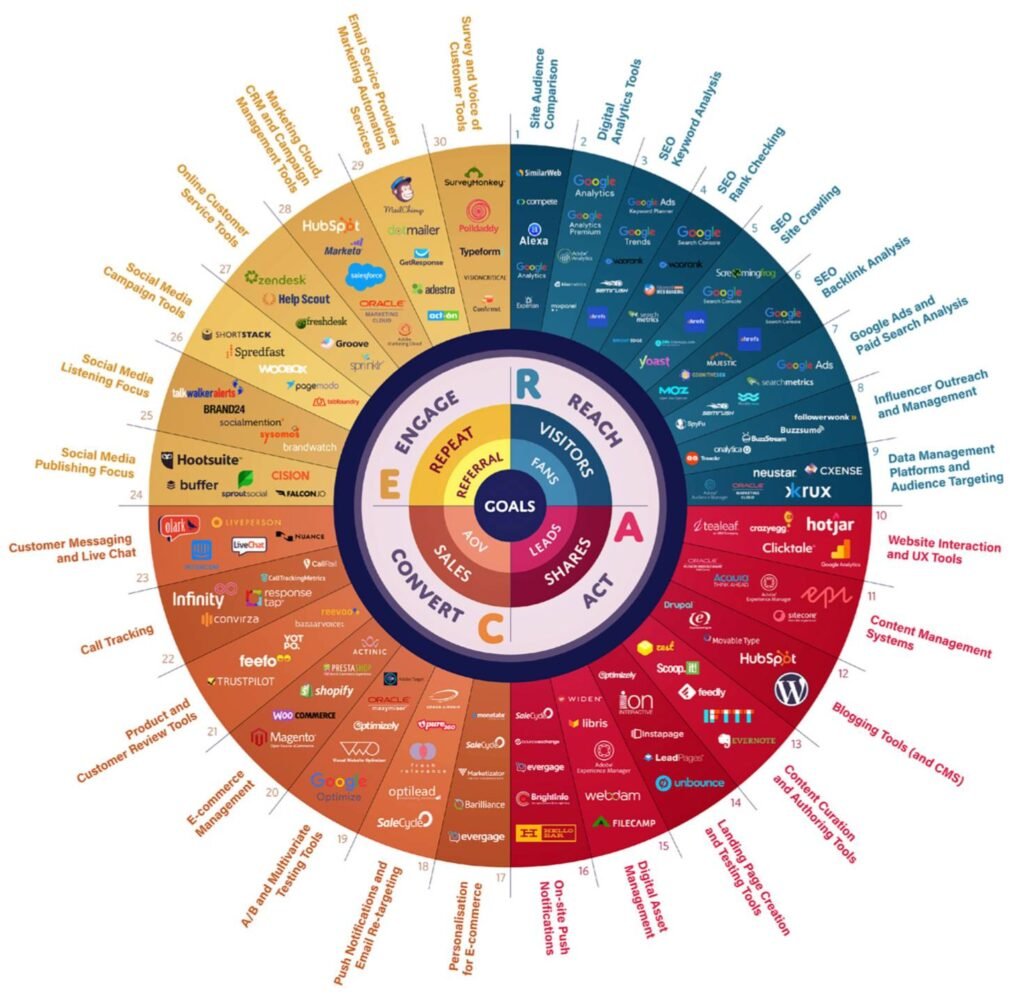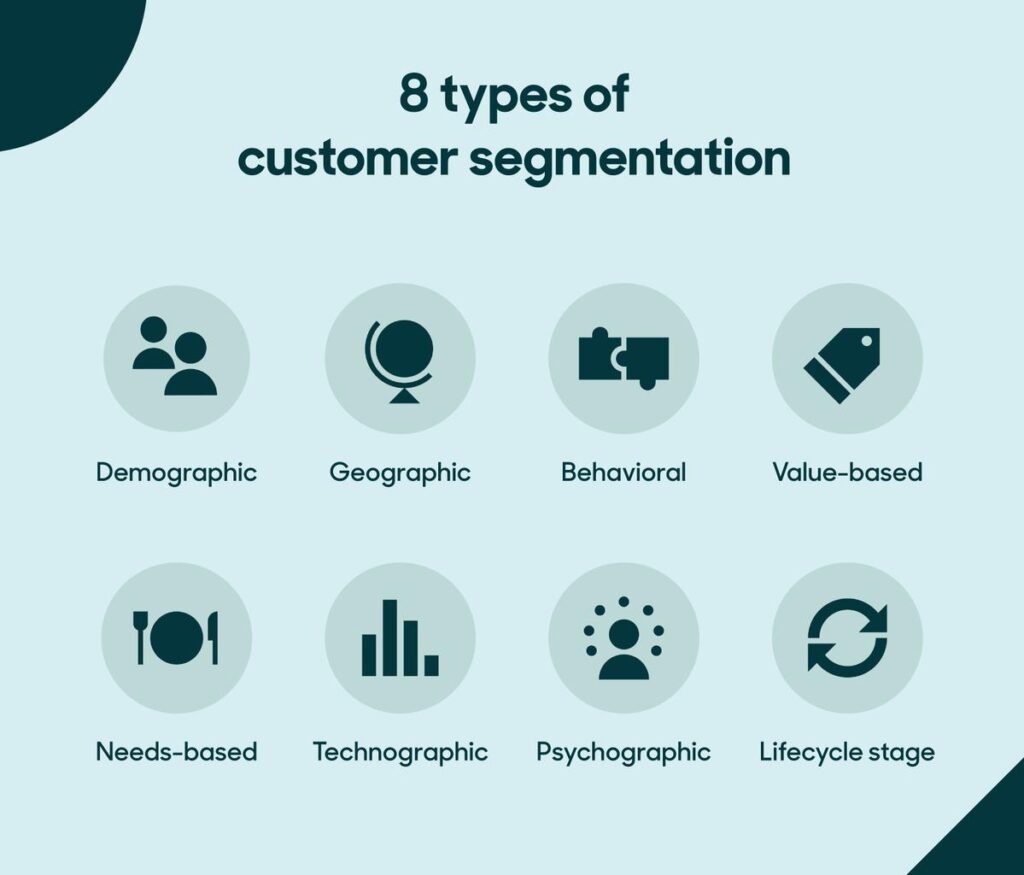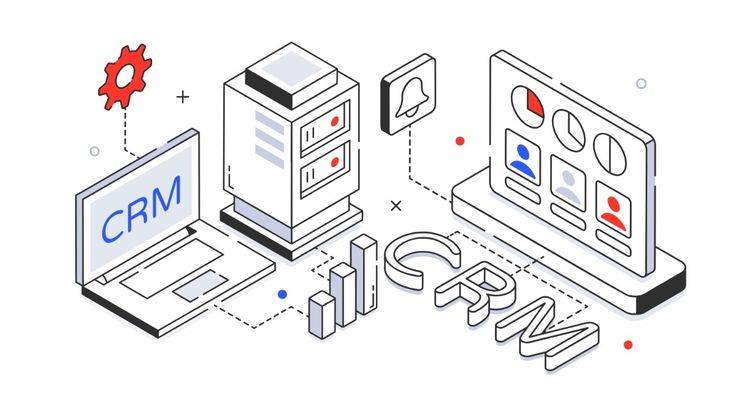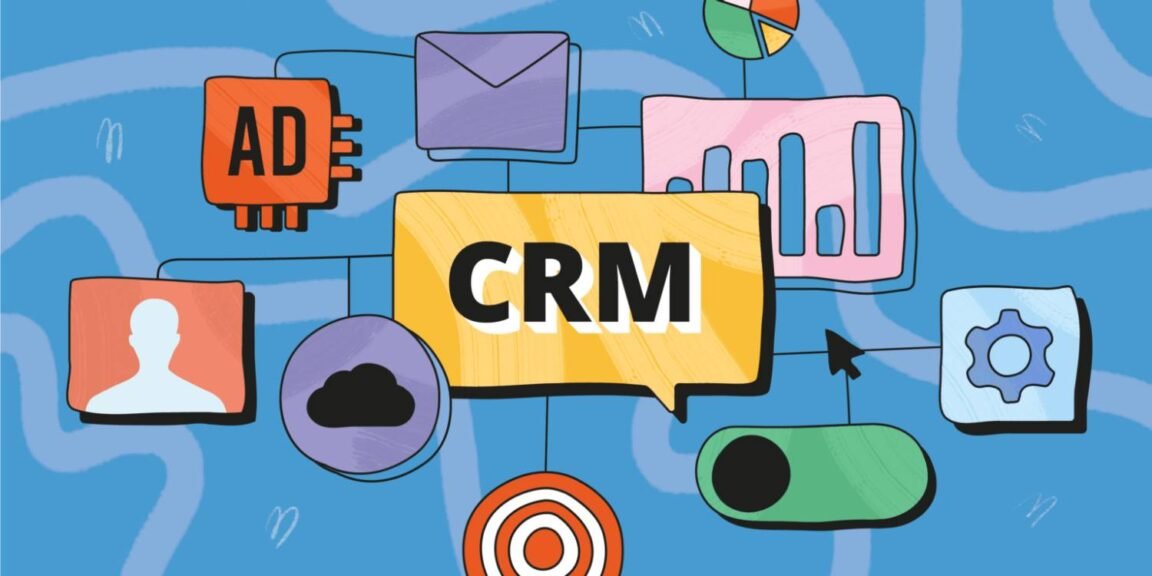Are you struggling to connect the dots in your marketing campaigns? Wondering why your Martech tools aren’t delivering the seamless results they promised? The answer might be missing integration—enter the CRM, a game-changing component of any Martech stack.
A Customer Relationship Management (CRM) system isn’t just a glorified contact book. It’s the heartbeat of your Martech stack, harmonizing data, streamlining workflows, and delivering insights that lead to smarter marketing decisions and bigger business wins. Let’s dive into why a CRM is indispensable in your Martech ecosystem, with examples, stats, and actionable advice to give you an edge.
Table of Contents
What Exactly Is a Martech Stack?

Your Martech stack is the arsenal of software tools that powers your marketing efforts. From SEO platforms like SEMrush, email marketing tools like Mailchimp, to analytics tools like Google Analytics, these components allow marketers to execute and measure campaigns.
However, the success of your Martech stack depends on its integration and ability to communicate—and that’s where a CRM takes the lead.
Why Is a CRM the Backbone of Your Martech Stack?
1. Centralizing Customer Data
Did you know that companies using a centralized CRM see a 45% increase in lead conversion rates? (Source: Quaxar)
A CRM consolidates all your customer data—think purchase history, demographics, preferences, and even past conversations—into a single source of truth. With this at your fingertips, marketing teams can:
- Personalize campaigns for specific audience segments.
- Avoid repetitive communications (ever received two identical emails from the same company?).
- Deliver campaigns that actually resonate.
For instance, integrating HubSpot CRM into your Martech stack allows seamless tracking of every customer touchpoint, ensuring personalized interactions.
2. Streamlining Cross-Functional Collaboration
Imagine this: Your sales team uses one tool, your marketing team uses another, and customer support uses a third. Sound familiar? This disconnect creates silos that a CRM eliminates.
A CRM acts as the connective tissue between teams, ensuring they:
- Share real-time updates on leads and customers.
- Access unified customer profiles.
- Streamline workflows to avoid miscommunication.
Example: Say a lead clicks on a PPC ad and schedules a demo. Your CRM captures this data and notifies the sales team to follow up while syncing details with your email platform for nurture campaigns.
3. Powering Advanced Audience Segmentation

Why spray and pray when you can segment and conquer?
Using CRM data, you can create hyper-targeted campaigns by segmenting audiences based on:
- Behavior (e.g., pages visited or actions taken on your website).
- Demographics (e.g., location, industry).
- Engagement (e.g., email opens, form submissions).
Stat Alert: Campaigns using segmented email lists achieve 760% more revenue than those using one-size-fits-all lists.
4. Driving ROI with Smarter Insights
A CRM provides a bird’s-eye view of your campaigns:
- Which channels drive the most leads?
- How do your customer journeys unfold?
- Where are prospects dropping off?
This data enables marketers to adjust strategies in real-time, ensuring every dollar spent yields results. According to Forrester, companies using CRMs see a 29% increase in marketing ROI.
Example: By integrating CRM insights with Google Ads, you can optimize ad spend by targeting high-value audience segments instead of low-intent leads.
5. Enabling Omni-Channel Personalization
In today’s world, customers interact with brands across multiple touchpoints—social media, email, websites, and more. A CRM ensures these experiences are:
- Consistent: No more fragmented communications.
- Personalized: Tailored messages based on past interactions.
- Efficient: Automated workflows for quicker response times.
Pro Tip: Martech companies can leverage CRM tools to track visitor behavior on their site and personalize follow-ups, creating a seamless customer journey.
Key Features of a CRM That Supercharge Martech Stacks

1. Integration Capabilities
A CRM needs to connect with:
- SEO tools: Sync with platforms like Ahrefs to understand which keywords drive engagement.
- Email marketing tools: Automate nurture campaigns with tools like Mailchimp or ActiveCampaign.
- Social platforms: Track and analyze interactions from LinkedIn or Twitter.
2. Automation for Efficiency
Repetitive tasks? Automate them!
- Automate lead scoring to identify hot prospects.
- Set triggers for email follow-ups or reminders.
- Create workflows for onboarding new leads.
For example, HubSpot CRM allows automated triggers based on user behavior, such as sending a follow-up email when someone downloads an eBook.
3. Real-Time Reporting and Dashboards
A CRM offers intuitive dashboards to track:
- Lead conversion rates.
- Pipeline progress.
- Campaign performance metrics.
Imagine having real-time data on which blog posts are converting leads—this insight helps optimize content strategy.
How a CRM Boosts Martech SEO
Let’s take a moment to talk SEO. A well-integrated CRM doesn’t just streamline campaigns—it plays a direct role in boosting your search engine rankings:
- Track leads generated from organic traffic and map their journey.
- Identify which keywords bring in the most conversions and double down on them.
- Integrate with tools like SEMrush for actionable keyword data.
If you’re a Martech SaaS company, Derivate X specializes in SEO for businesses just like yours, helping you rank for competitive keywords and drive qualified traffic. Let’s connect?
Real-Life Use Case: How CRM Transforms Martech Strategy
A B2B SaaS company integrated Salesforce CRM with their Martech stack. Here’s what they achieved:
- A 38% increase in lead conversion by syncing email campaigns with audience behavior.
- 20% higher engagement by personalizing customer journeys across channels.
- Reduced churn by automating customer follow-ups and reminders.
TL;DR: Why Your Martech Stack Needs a CRM
- Centralized data for better personalization.
- Seamless integrations with SEO, email, and analytics tools.
- Smarter audience segmentation for targeted campaigns.
- Higher ROI with actionable insights.
- Omni-channel marketing that feels personal and cohesive.
FAQs
-
What is a CRM’s primary role in a Martech stack?
A CRM centralizes customer data, enables segmentation, and ensures seamless communication between marketing tools, driving better ROI.
-
Can a CRM help with SEO?
Yes! By integrating CRM with SEO tools, you can track organic traffic performance and optimize keywords that convert leads.
-
Which is the best CRM for Martech companies?
HubSpot, Salesforce, and Zoho are top choices, offering excellent integration and scalability.
-
How does a CRM improve campaign performance?
A CRM enables hyper-targeted campaigns, ensuring you reach the right audience with the right message, increasing engagement and conversions.
-
What are the must-have features in a CRM for Martech?
Integration, automation, reporting, and personalization tools are key features for an effective Martech stack.



2 Comments